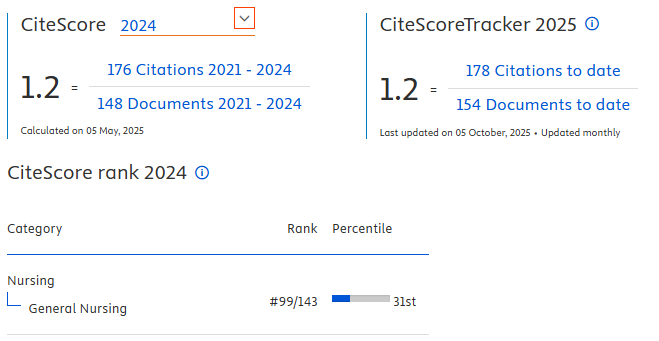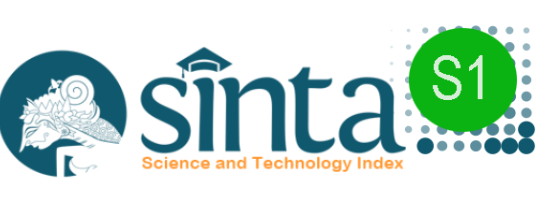The Management of Diabetic Foot Ulcers Using the Wound Treatment Techniques of Modern Dressing: A Systematic Review
Downloads
Background: One of the complications caused by diabetes mellitus is the problem of diabetic foot ulcers (DFU). The management of the DFU problem can be carried out through the wound care focused on the foot using modern dressings. This research was to determine the effectiveness of modern dressings on the healing process of diabetic foot ulcers.
Methods: The methods used in arranging this systematic review were (1) the identification of interventions in the literature, (2) the identification of relevant literature based on the topic and title, (3) obtaining the literature in full-text form and (4) the analysis of the results from the various interventions in the literature.
Result: The literature search was carried out in several databases such as Scopus, Google Scholar and Pubmed. The samples in this article were research about the effect of modern dressings in the treatment of diabetic foot ulcers. A total of 22 evidence bases found 10 studies using the pre-experimental method, 3 RCTs, 2 quasi-experiments, 2 articles / systematic reviews, 2 perspective studies, 1 medical report, 1 case study and 1 vitro and vivo study.
Conclusion: Based on the review, it explains that the research on modern dressings using nanocrystalline silver ion and curcumin can improves wound recovery by increasing the transformation rate of the íŸ1 growth factor, which is a protein involved in cell growth and proliferation.
Dong, C. Y., & Liu, W. J. (2017). Effect of oil gauze silver dressings on diabetic foot ulcers in the elderly. (October).
Edmonds, M., Lázaro-martínez, J. L., Alfayate-garcía, J. M., Martini, J., Petit, J., Rayman, G., & Lobmann, R. (2017). Articles Sucrose octasulfate dressing versus control dressing in patients with neuroischaemic diabetic foot ulcers ( Explorer ): an international , multicentre , double-blind , randomised , controlled trial. 8587(17), 1–11. https://doi.org/10.1016/S2213-8587(17)30438-2
Gupta, V., Kakkar, G., Gill, A. S., Gill, C. S., & Gupta, M. (2018). Comparative Study of Nanocrystalline Silver Ion Dressings with Normal Saline Dressings in Diabetic Foot Ulcers. Journal of Clinical and Diagnostic Research, (June 2017), 1–4. https://doi.org/10.7860/JCDR/2018/36691.11590
Henshaw, F. R., Bolton, T., Nube, V., Hood, A., Veldhoen, D., Pfrunder, L., ... Twigg, S. M. (2014). Journal of Diabetes and Its Complications Topical application of the bee hive protectant propolis is well tolerated and improves human diabetic foot ulcer healing in a prospective feasibility study. Journal of Diabetes and Its Complications, 28(6), 850–857. https://doi.org/10.1016/j.jdiacomp.2014.07.012
Jung, J., Yoo, K., & Han, S. (2016). Evaluation of the Efficacy of Highly Hydrophilic Polyurethane Foam Dressing in Treating a Diabetic Foot Ulcer. 29(12), 546–555.
KemenkesRI. (2014). Pusat Data dan Informasi.
Liu, Y., Zhou, S., Gao, Y., & Zhai, Y. (2018). Electrospun nanofibers as a wound dressing for treating diabetic foot ulcer ✩. Asian Journal of Pharmaceutical Sciences, 000, 1–14. https://doi.org/10.1016/j.ajps.2018.04.004
Nasiri, M., Fayazi, S., Jahani, S., Yazdanpanah, L., Haghighizadeh, M. H., & Jundishapur, A. (2015). The effect of topical olive oil on the healing of foot ulcer in patients with type 2 diabetes : a double-blind randomized clinical trial study in Iran.
Niederauer, M. Q., Michalek, J. E., & Armstrong, D. G. (2017). A Prospective, Randomized, Double-Blind Multicenter Study Comparing Continuous Diffusion of Oxygen Therapy to Sham Therapy in the Treatment of Diabetic Foot Ulcers. Journal of Diabetes Science and Technology, 11(5), 883–891. https://doi.org/10.1177/1932296817695574
Rahayu, U. M., Ramlan, D., Anwar, M. C., Sri, R. R., & Pujiastuti, E. (2018). Combination of modern dressing and bagging ozone therapy for speed up the process of wound healing of grade II diabetic ulcer patients. (November 2017), 1–5.
Ramarao, K., & Ramu, L. (2017). Comparative Study between the Effect of Topical Insulin and Normal Saline Dressing in Healing of Diabetic Foot Ulcers. 4(6), 1337–1339.
Tavakkoli-kakhki, M., & Motavasselian, M. (2017). Successful Repair of Diabetic Foot Ulcer with Honey-Based Treatment : A Case Report. 19(3). https://doi.org/10.5812/ircmj.41939.Case
Tong, W. Y., bin Abdullah, A. Y. K., binti Rozman, N. A. S., bin Wahid, M. I. A., Hossain, M. S., Ring, L. C., ... Tan, W. N. (2018). Antimicrobial wound dressing film utilizing cellulose nanocrystal as drug delivery system for curcumin. Cellulose, Vol. 25, pp. 631–638. https://doi.org/10.1007/s10570-017-1562-9
Tsang, K., Kwong, E. W., Woo, K. Y., To, T. S., Chung, J. W., & Wong, T. K. (2015). The Anti-Inflammatory and Antibacterial Action of Nanocrystalline Silver and Manuka Honey on the Molecular Alternation of Diabetic Foot Ulcer : A Comprehensive Literature Review. 2015.
World Health Organization. (2017). Media Centre WHO Diabetes Mellitus.
Xu, J., Min, D., Guo, G., Liao, X., & Fu, Z. (2018). Experimental study of epidermal growth factor and acidic fibroblast growth factor in the treatment of diabetic foot wounds. 5365–5370. https://doi.org/10.3892/etm.2018.6131
Authors who publish with Jurnal Ners agree to the following terms:
- Authors transfer the Copyright and grant Jurnal Ners the right of first publication with the work simultaneously licensed under a Creative Commons Attribution 4.0 International License that allows others to remix, adapt and build upon the work with an acknowledgment of the work's authorship and of the initial publication in Jurnal Ners.
- Authors are permitted to copy and redistribute the journal's published version of the work (e.g., post it to an institutional repository or publish it in a book), with an acknowledgment of its initial publication in Jurnal Ners.
Jurnal Ners requires a formal written declaration and transfer of copyright from the author(s) for each article published. We, therefore, ask you to complete and return this form, retaining a copy for your own records. Your cooperation is essential and appreciated. Any delay will result in a delay in publication. The form can be downloaded HERE.
































